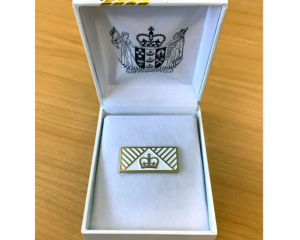The amateur palaeontologist who discovered one of the world's oldest flying seabirds in the South Island has been credited for another major find.
A study published today in the Journal of Vertebrate Paleontology points to fossil bones unearthed by Leigh Love as probably the oldest example of a relative of today's tropicbirds.
The ancient bones were found in 60-million-year-old greensand deposits near Waipara - not far from where Mr Love found remains belonging to an unknown group of flying seabirds and named Australornis lovei, or Love's Southern Bird.
That fossil also happened to come from the same deposits as the world's oldest penguin, Waimanu, and appeared to be most similar to two species described from the late Cretaceous period of the Antarctic Peninsula.
The latest find, formally described by researchers from Canterbury Museum and Germany's Senckenberg Museum, is considered an early representative of tropicbirds that inhabit the warm waters of the tropical and sub-tropical oceans.
The red-tailed tropicbird breeds in New Zealand only in the Kermadec Islands, ranging south to Northland and occasionally further south in the summer. This fossil shows that in the tropical early Paleocene period - just after the event that caused the extinction of dinosaurs - tropicbirds inhabited the waters surrounding the whole of Zealandia, the ancient sub-continent New Zealand was once part of.
Until the discovery of this fossil, all other reported fossil tropicbirds finds were in the Northern Hemisphere and it had been assumed that tropicbirds had spread from Laurasia, the northern supercontinent neighbour of Gondwana.
"The new fossil is an exciting find as it helps our understanding of how tropicbirds evolved," said study co-author Dr Paul Scofield, an Adjunct Professor of Palaeontology at Canterbury University.
It could be directly linked to fossil finds of previously unknown origins.
The first, from the late Cretaceous period, about 70 million years ago, was found in New Jersey, US, while several fossils from the late Paleocene period, about 58 million years ago, were found in Morocco and central Asia.
Senckenberg Museum curator of birds Dr Gerald Mayr said the discovery gave us the earliest insight into the evolution of "one of the most enigmatic" lineages of seabirds.












